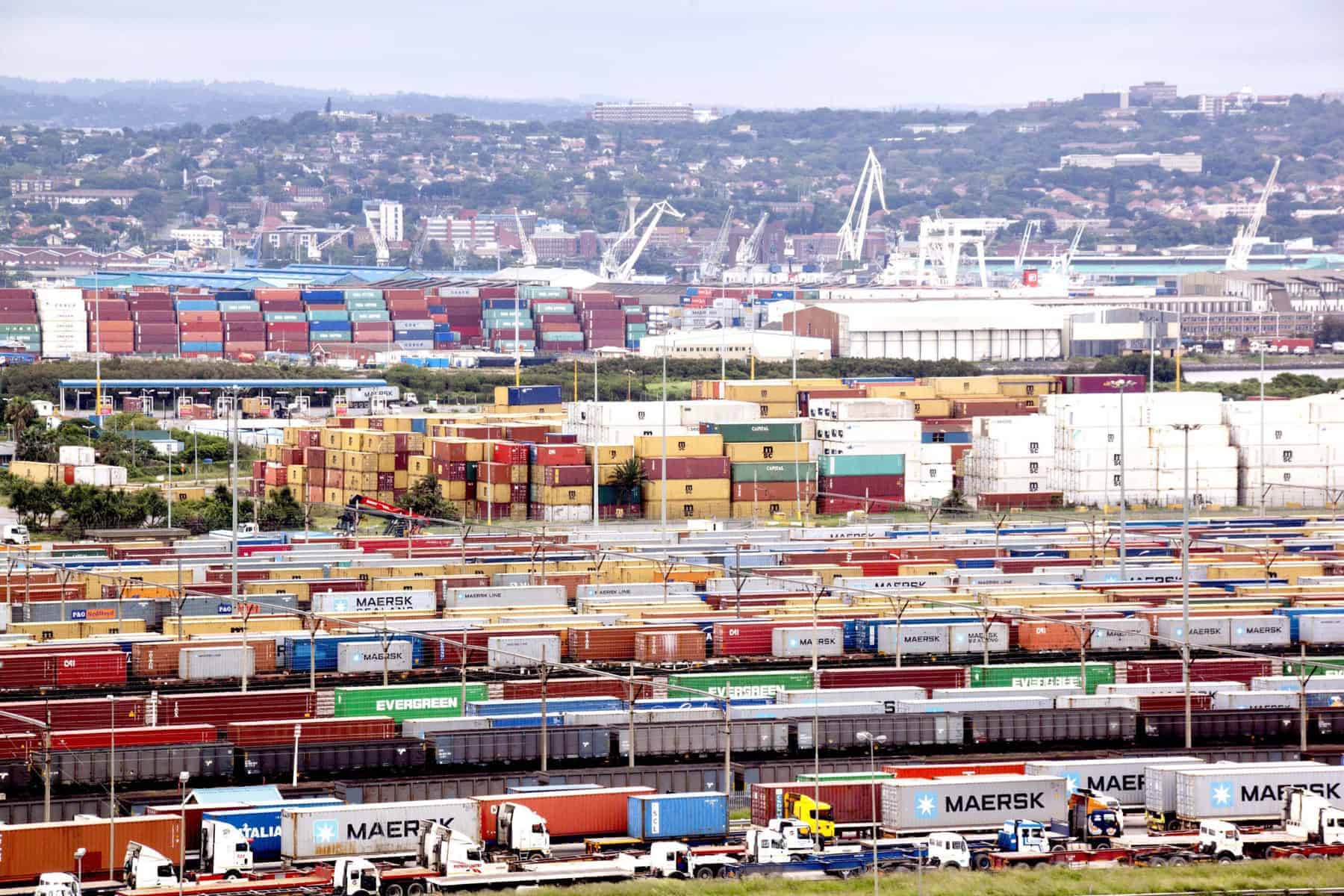There are additionally indicators that the backlog on the container port is easing, with 11 vessels at the moment at anchorage off the Durban coast awaiting offloading.
State-owned port and logistics operator Transnet final week introduced a request for proposals (RFP) for the reconstruction, deepening and lengthening of two berths at Durban Container Terminal’s (DCT) Pier 2 North Quay.
That is a part of the R154 billion KwaZulu-Natal (KZN) Ports Grasp Plan supposed to rework the container port into a world container hub. Durban at the moment ranks among the many least environment friendly on the earth, in response to a 2022 World Financial institution examine.
ALSO READ: Chaos at ports will price the nation, companies and customers
There are additionally indicators that the backlog on the container port is easing, with 11 vessels at the moment at anchorage off the Durban coast awaiting offloading.
The backlog ought to cut back to single digits in December as extra gantry cranes are introduced into service, alongside different effectivity enhancements launched in latest weeks, in response to Transnet.
Pier 2 handles roughly 65% of SA’s containerised cargo and is the principle hyperlink to the nation’s hinterland. Transnet says the berth deepening challenge will assist increase the Port of Durban’s throughput from the present 2.7 million TEUs (20-foot equal models) to 4.5 million TEUs over the subsequent 10 years.
ALSO READ: Transnet says it could possibly clear Durban port backlog by early 2024
The price of the five-year berth deepening challenge is unknown at this stage, and disclosing estimates may doubtlessly skew the result of the bidding course of.
Essential step in revitalising port
Bridgette Gasa-Toboti, portfolio director at KZN Logistics Hub for Transnet Nationwide Ports Authority (TNPA), instructed the media on Monday that the berth deepening challenge had been within the works for greater than seven years and is an important step within the general grasp plan to revitalise the port.
“The elevated dimension of container vessels calling the Port of Durban has necessitated a challenge of this magnitude, as DCT Pier 2 berths at the moment are working past their authentic design specification relating to water depth,” stated Gasa-Toboti.
Modernisations of Durban’s port infrastructure have been wanted to handle the rise in ship visitors, notably the ever-increasing dimension of vessels calling on the port.
ALSO READ: Durban: Exponential time improve at port with delays as much as 364 hours in Sept
The berth deepening challenge is being actioned now due to the necessity for elevated operational capability, and it’ll permit different initiatives within the Ports Grasp Plan to bear fruit. Transnet says the SA financial system is at the moment sluggish; therefore, it is very important put together now for the eventual restoration in financial progress.
Moshe Motlohi, managing government for Japanese Area Ports at Transnet, stated Durban had misplaced capability over time to deal with elevated ship visitors, notably as vessels turned bigger. Whereas Pier 2 may beforehand deal with three ships at a time, this decreased to 2 as ships turned bigger.
“With this challenge, [we] will be capable to deal with three massive ships,” he stated.
Pier 2 improve
The Pier 2 improve goals to enhance efficiencies and cut back prices for vessels by deepening berths 203, 204 and 205, together with the basin and strategy channel, deepening from 12.8 metres to 16.5 metres.
This can take away an important bottleneck that forestalls vessels requiring a draft of greater than 12.2 metres from coming into the harbour throughout low tide.
The berth size will probably be elevated from 914 metres to 1 210 metres to securely accommodate the simultaneous berthing of three Tremendous Publish Panamax vessels of 350 metres in size and a draft of 14.5 metres.
Tremendous Publish Panamax vessels at the moment take up two berths on the North Quay, which decreases port container capability.
The plans name for Durban to be positioned because the nation’s premier container and automotive hub, growing its capability from 520 000 absolutely constructed models (FBUs) per 12 months to at least one million FBUs. Richards Bay is earmarked to deal with dry bulk, together with bulk relocated from Durban and liquefied pure gasoline (LNG).
The SA Navy base on Salisbury Island in Durban is to be relocated to Richards Bay, although it would retain a satellite tv for pc station at Durban.
ALSO READ: MTBPS: Godongwana tries to sort out municipal debt, electrical energy and Transnet
The berth-deepening initiatives will create about 32 730 jobs over 5 years. The a lot bigger Port Grasp Plan envisages creating about 570 000 jobs over the subsequent 30 years by deploying R154 billion in capex.
Additionally deliberate for Durban are three so-called back-of-port amenities that may help in decongesting the port.
These are the:
- Durban Logistics Park, an intermodal facility for containers, automobiles, business and logistics, with a truck staging space;
- Cato Ridge Intermodal Terminal, a personal sector initiative specializing in containers and the automotive sector; and
- Dube Hub, which can combine with the rail system to evacuate containers to the north of the Durban port.
This text was republished from Moneyweb. Learn the unique right here
